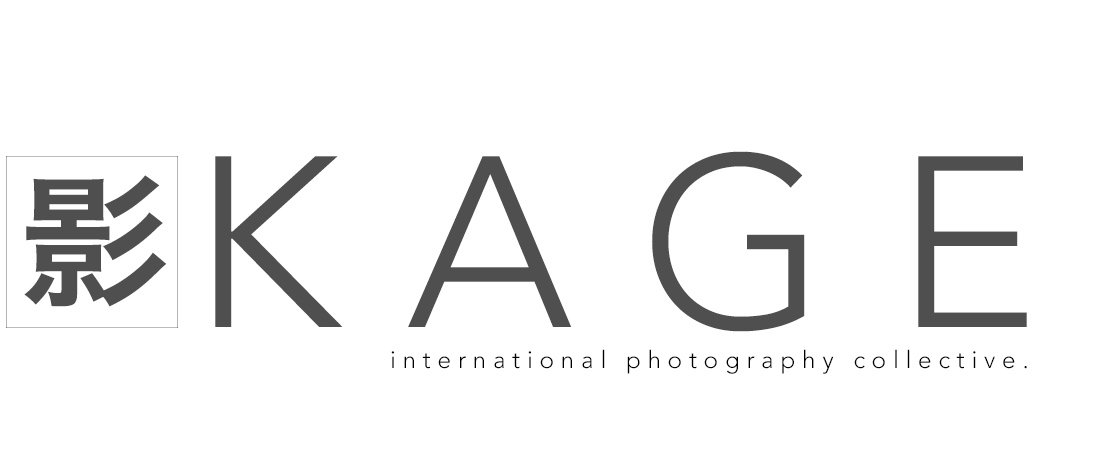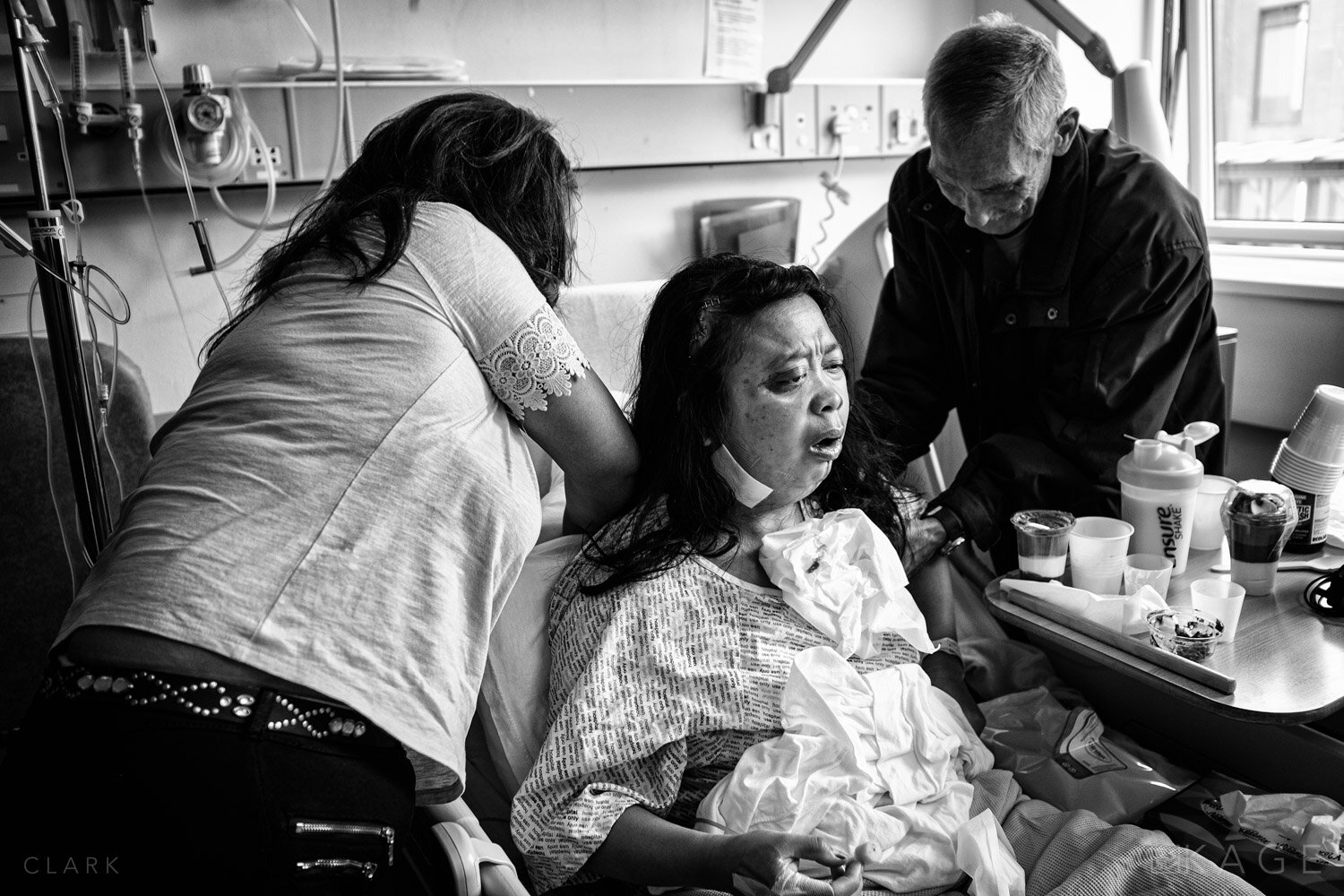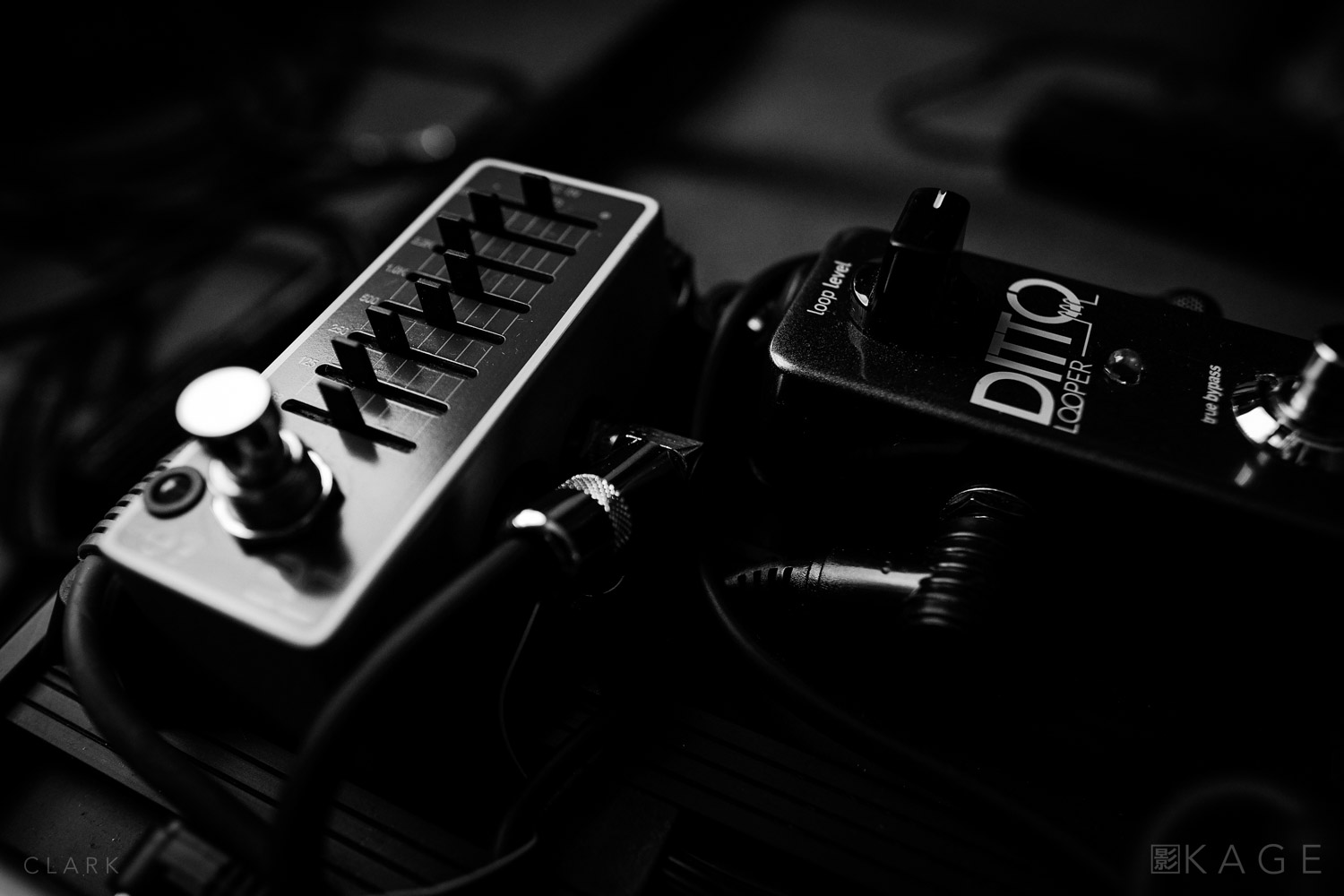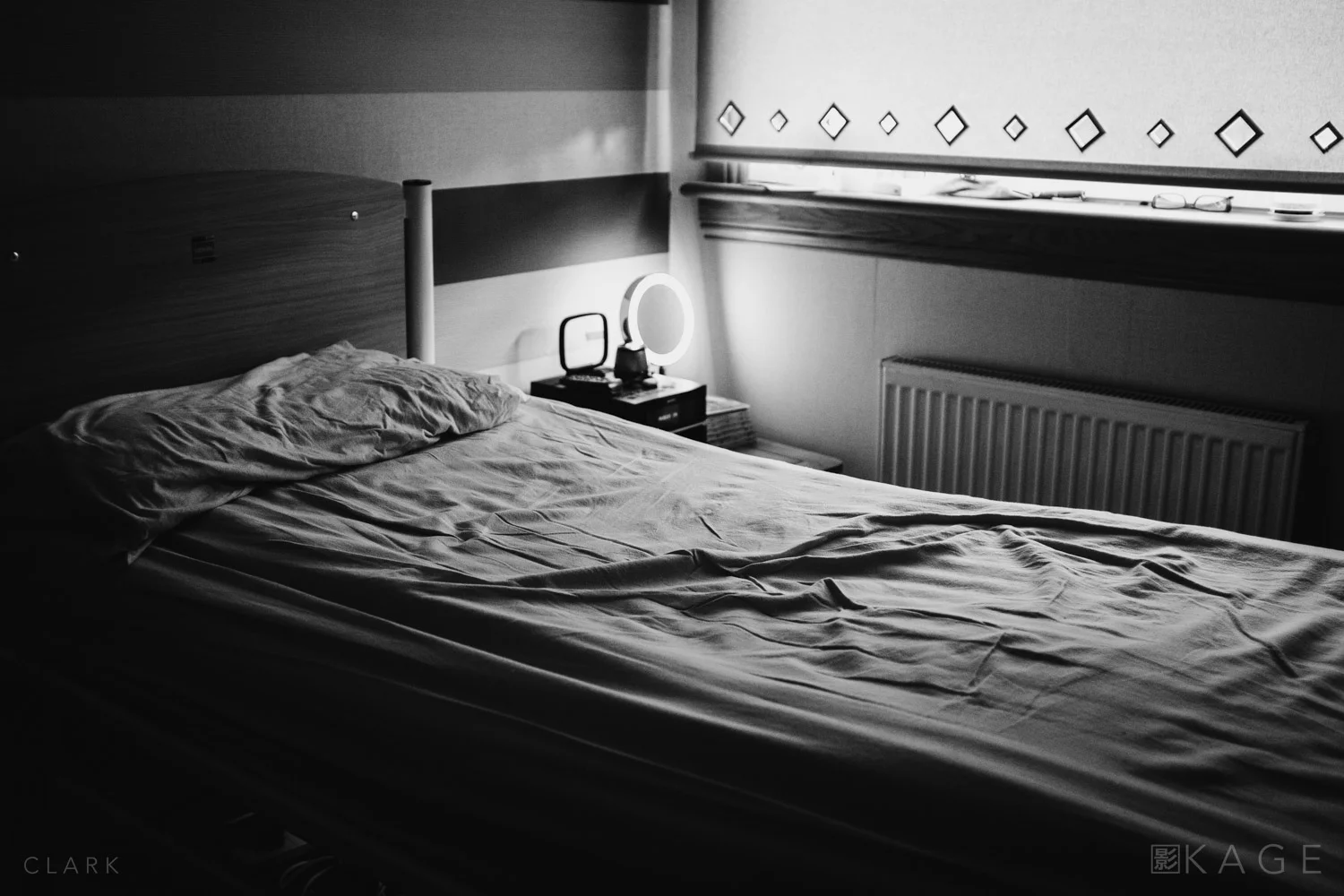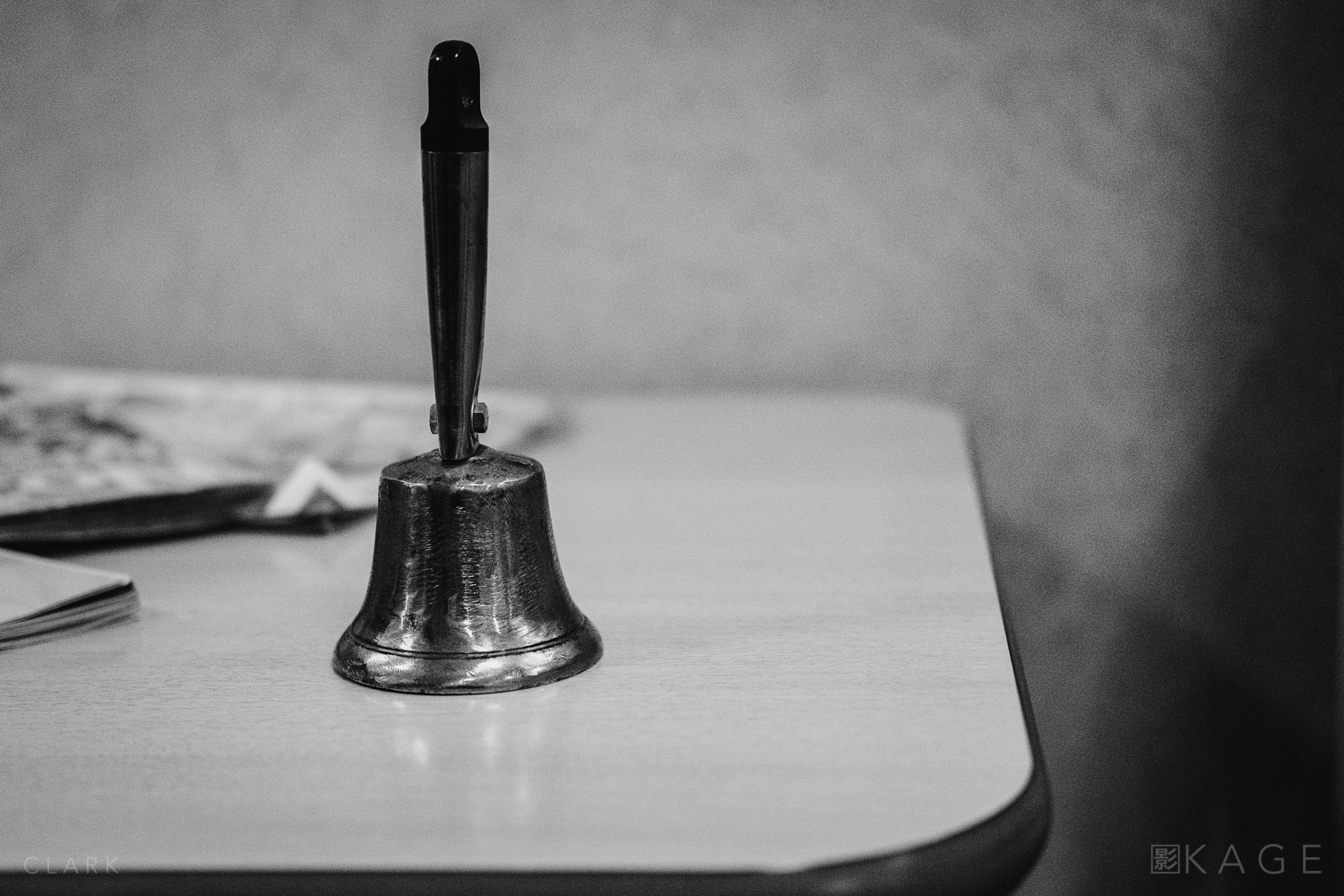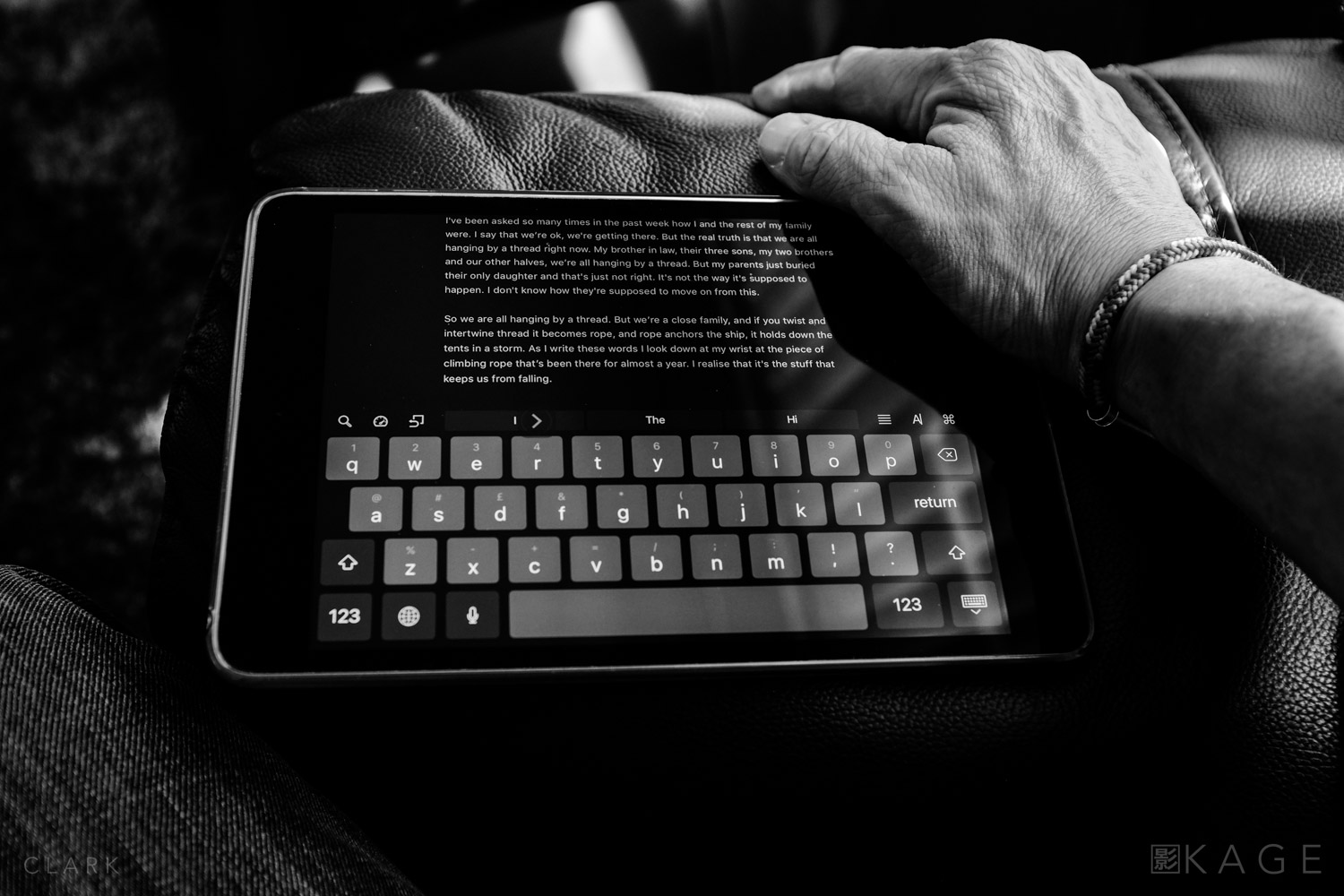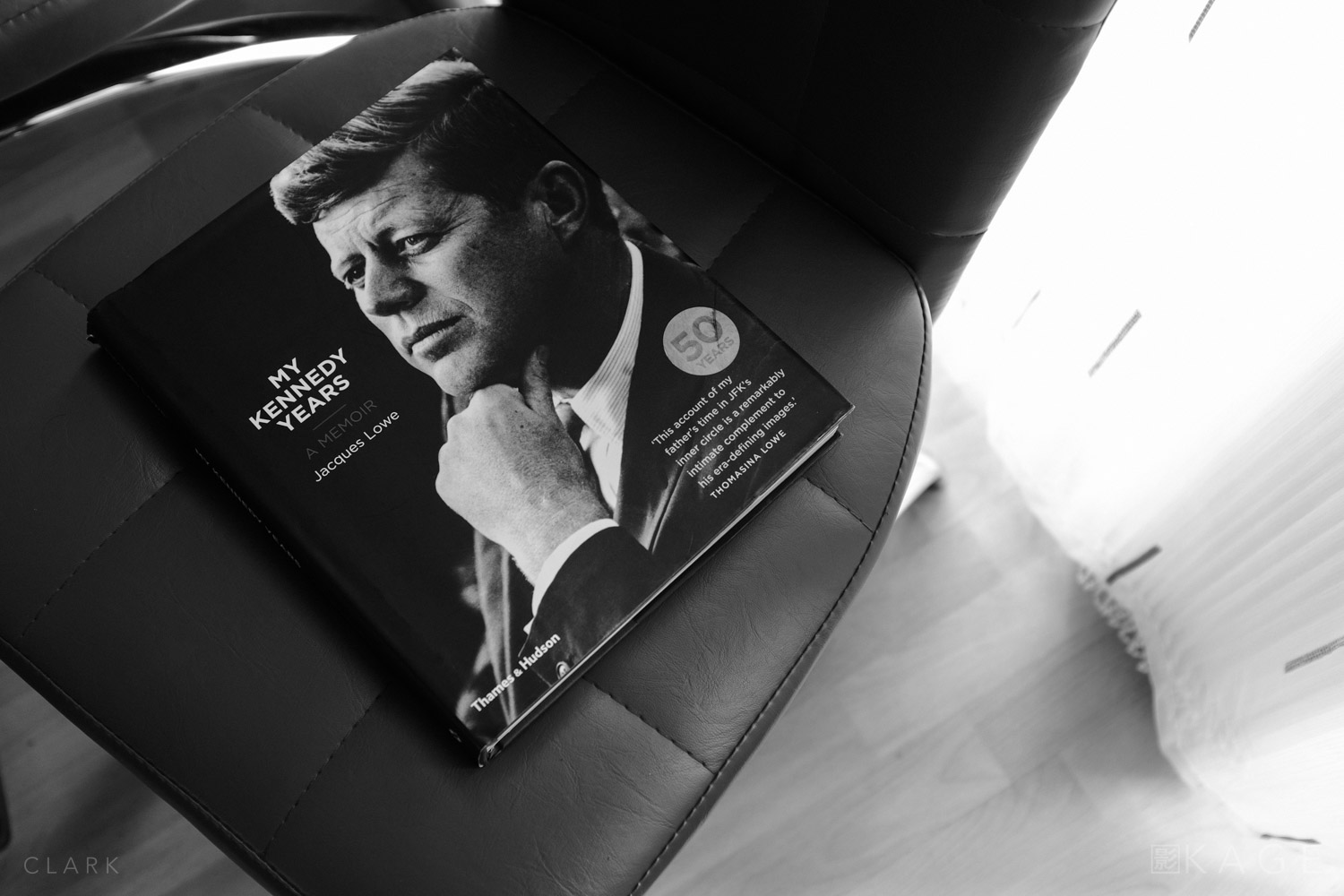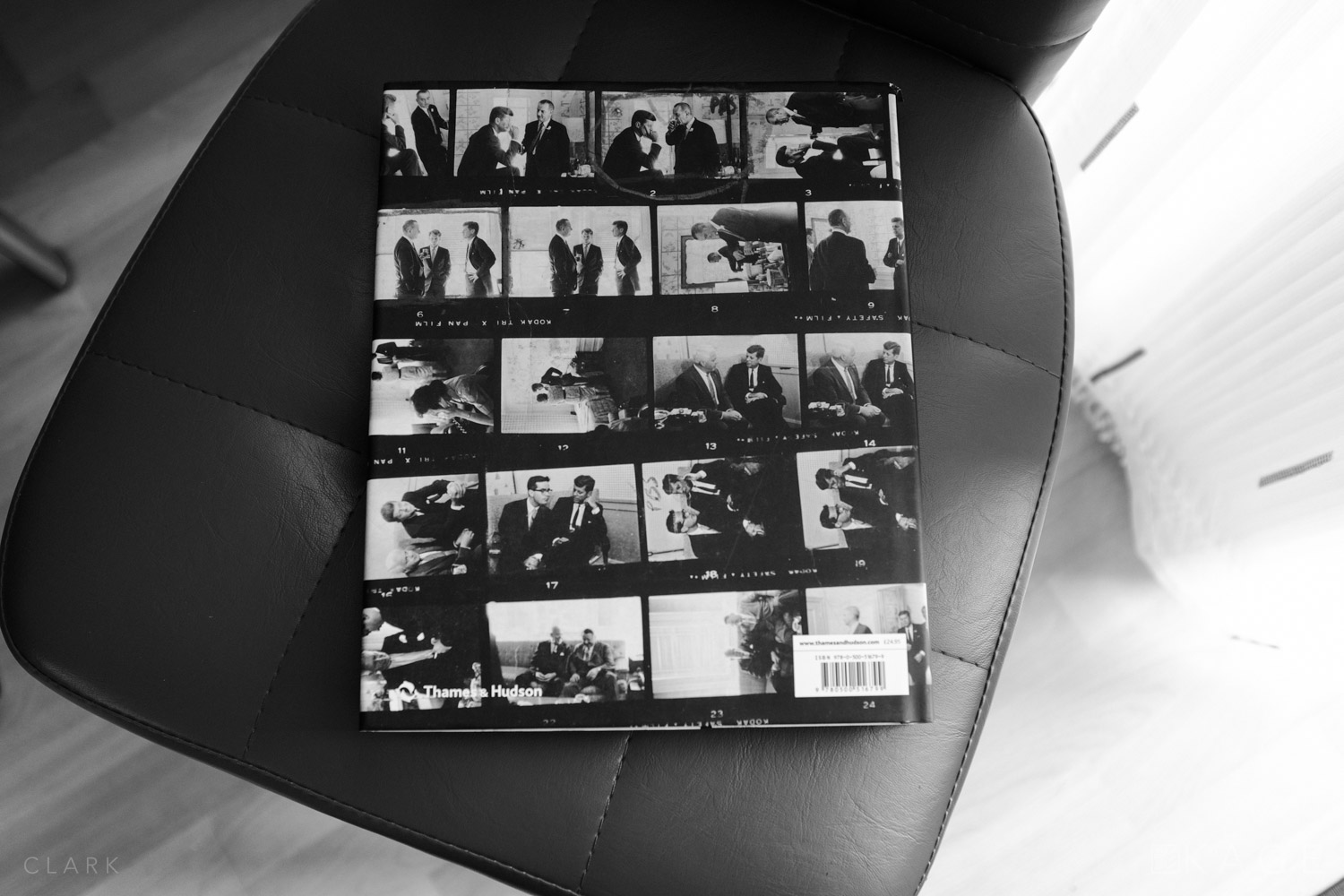The Samye Ling Tibetan Buddhist Monastery is set in the countryside of Southern Scotland, around 16 miles from Lockerbie and 20 miles from the Scotland/England border. Visiting this monastery is like teleporting to another country at another time. This would be the type of place I would definitely visit while abroad. Being warm and sunny certainly helped create the illusion of another time another place, weather we don’t get an awful lot of in Scotland.
That Was Then. This Is Now
I’m confused. After all these years of wanting to visit and photograph Auschwitz, I finally went, and it was indeed a moving experience as you would expect. But it’s also tainted by the realisation that we have already entered into a dark time in the present day that feels every bit as dangerous as the late 1930s. Auschwitz for me stands as a reminder of how dark and despicable humans can be, and that we can never go there again. But we are.
Definition 010 | The Story Of Her Beauty
PHOTOGRAPHY & TEXT BY DEREK CLARK
There is only a handful of things that defines me and most of them involve photography. I spoke about street photography in my first Definitions post last month, which is a form of documentary photography. But I also like straight-up photojournalistic stories that are plain and simple, with no frills. What you see is how it was, and all the better if it has an impact on the viewer.
Documentary photographers have to keep their eyes and ears open for opportunities to tell someone’s story. It’s very easy to miss the chance of a good story simply because you were not paying attention to the signs in front of you. Almira simply wanted a portrait taken the night before her operation. She was about to go through gruelling surgery that would be life-changing and the outcome was uncertain. This is the story of her beauty, a title I got from a conversation with Almira.
Almira’s body language shows the apprehension the night before the operation
Almira contracted German Measles when she was just a few months old in the Philippines, which led to facial disfigurement. An operation was performed many years ago that involved inserting a piece of bone into her jaw, but that bone started to grow and it began to restrict movement. Eating would become a problem unless she received an operation to fix this. She has lived in Scotland for many years with her husband Alex, and although it has taken almost 5 years, the operation was finally scheduled.
We left for the hospital the following morning at 6 am, setting off early in case of traffic but arriving so early that the nurses had not even started their shift. We waited outside the ward, mostly in silence. When the nurse finally opened the door and led Almira and Alex down the corridor to the waiting room, she explained that the ward was empty because no other surgeries were scheduled for that day. She joked with Almira about how special she was to get the full unit dedicated to her. The nurse let Almira and Alex say their goodbyes and then led her off down the corridor until they were both gone.
Queen Elizabeth II Hospital
A nurse leads Almira down a corridor toward the operating theatre
The surgery to repair Almira's jaw with titanium was scheduled to last 5 or 6 hours, but she was in theatre for a total of 13 hours. The following day we arrived at the hospital to find Almira asleep on the bed. She looked like she had been through a war, battered, bruised and swollen. She woke-up and was helped to straighten up on the bed, still drugged heavily, but possibly not heavily enough. She struggled to eat some chocolate mousse, which along with soup and ice cream, would be her only food for the foreseeable future.
Almira was discharged the following day. It was hard to believe the difference from when I had last seen her the day before propped up and looking like she had been used as a punching bag. As she entered the elevator and looked in the mirror, it was as though she was staring into the face of a long lost sister. She held on to a tub of ice cream, even though it would be melted by the time she got home.
Almira stares at her face in the elevator mirror
Almira walks up the stairs at her house
Almira shows pictures on her phone from when she was a baby - before the German Measles attack.
Almira was back at the hospital a week later to have the staples removed from her head and the stitches from her face. The surgeon had made incisions each side of her eyes and packed them so that each eye would be more level. The wound ran from almost the top of her head down the front of her ear, with a second scar on her jaw.
She had suffered a lot of pain to get this far and she was anxious about the staples being removed. The nurse gently parted her hair to reveal the scar and then proceeded to remove the staples one by one. Almira held the second nurse's hand and gripped it even more tightly each time a staple was removed, her swollen face grimacing with the discomfort. When the staples had been removed the nurse then started to snip each suture, before removing it with tweezers.
Almira anxiously waits for the staples to be removed from her head, and the sutures from her jaw and next to her eye.
When it was over, Almira looked relieved with an almost child-like expression. It was the end of this procedure. But there may be more surgery needed in the future. For now, all that was left was to heal and have the braces removed from her teeth that were fitted to hold everything together during the operation.
Almira - March 2020
Thanks to Almira for allowing the world to see her at her most vulnerable. People have to throw vanity out of the window to allow documentary photographers to tell real stories. That takes real bravery.
A special thanks to all the people that make the UK’s health service one of the best in the world. We are on the brink of the most devastating health crisis in over 100 years, and even though the NHS has been getting underfunded for the past decade, the amazing doctors, nurses and all the other staff will give everything. Sadly for some that could mean giving their lives.
18 August 2018 at 01:54am (Toronto, Canada)
The sky is calling. It's time to go.
There's no clearer sign that a trip is ending than the email from your airline saying 'check in online for your flight tomorrow!'
The packing has been going on all day; and at the same time, I'm drawn back to the details of where we are, the particulars of this place, which may or may not be here when I'm next in this country. So my focus is split between putting things in bags, and appreciating my surroundings one last time…
August 17, 2018 at 7:05am (Motherwell, Scotland)
By Derek Clark
Every day seems like groundhog day, but different each time. I've been making adjustments to this pedal board for months, ironing out problems by removing pedals and replacing them with solutions. A mic preamp, a monitor mixer, graphic EQ. It always looks so over the top for saxophone and a little bit of guitar, but it's all relevant. I hope it's finished. I'll find out soon.
Then a short intermission in groundhog day to go to the opticians to get my eyes tested. My eyesight has got worse since my last check, but I already knew that. I take a quick look at the kids section because that's where I choose my glasses from, due to my tiny cranium. But I'm not in the mood for change these days and I ask the optician to find me the exact same Ray-Bans I have at the moment.
I format memory cards and charge batteries for a shoot on Saturday and then the kids come home from the first day of school, showing mum the new timetable as they grab the first thing that's edible. It's official, the holidays are over. The recent groundhog day is about to become more like the old groundhog day. Pretty soon dance and music classes will begin again and we'll settle in for the winter.
11 August 2018 at 9:24am (Toronto, Canada)
I'm home.
Well, it's one of my homes - it feels like I have three, really: in Sydney, Toronto, and Pointe au Baril. But this is where I spent the most time, growing up.
This house has been here longer than I have; my parents bought it in 1962, and have somehow stayed here all that time - while I can't even remember all my addresses in the last 20 years, theirs has remained fixed…
JULY 26, 2018 at 3:30 PM (MOTHERWELL, SCOTLAND)
By Derek Clark
My sister lost her fight with cancer at 4:47 am on Tuesday 17th July 2018. She was 55 years old. Joyce was diagnosed with a brain tumour back in November 2016 and despite 6 months of radiotherapy, 14 months of chemotherapy, cannabis oil and honey imported from Israel, one tumour became two and it was clear treatment was not going to work.
Joyce kept her sense of humour right to the end, she never complained or showed any sign of self-pity, but a stroke changed her permanently and made communication more difficult and then finally almost impossible. At the end it was although everything but her lungs shut down, each breath a fight for survival. In the last few minutes of her life, she managed to open her eyes. She was surrounded by family, each of us holding on to her, making sure she knew we were there. Finally, her breath slowed, a few more breaths with longer gaps in between and then silence. She was gone forever.
July 24th, 2018. The funeral was today, exactly one week after she died. We couldn’t believe how many people showed up to pay their respects. It was a sea of faces, some I knew some I didn’t and some I should have known, but didn’t recognise. As requested by my brother in law, Joyce’s coffin was carried by her three brothers and three sons as her favourite singer Andrea Bocelli played in the background.
I've been asked so many times in the past week how I and the rest of my family were. I say that we’re ok, we're getting there. But the real truth is that we are all hanging by a thread right now. My brother in law, their three sons, my two brothers and our other halves, we’re all hanging by a thread. But my parents just buried their only daughter and that's just not right. It's not the way it's supposed to happen. I don't know how they're supposed to move on from this.
So we are all hanging by a thread. But we’re a close family, and if you twist and intertwine thread it becomes rope, and rope anchors the ship, it holds down the tents in a storm. As I write these words I look down at my wrist at the piece of climbing rope that’s been there for almost a year. I realise that it's the stuff that keeps us from falling.
Click on each picture for the caption
Masked importance
Photography and Text by Jonas Rask
In 2012, the Distinguished Gentleman's Ride was conceptualised in Australia by Mark Hawwa. Inspired by a single image of Mad Men's fictional character Don Draper and his classic styled motorcycle, the event sought to gather riders for a good cause, and rid themselves of the stereotype male motorcycle rider image.
Since then it has grown into a global phenomenon that raise a lot of money for- and awareness of mens health.
Since 2016 rather than mainly focusing on the fight against prostate cancer, DGR has turned to support what I think is even more important to mens health - Suicide prevention through Men's Mental Health awareness. I have lost count of how many times I have sat in my consultation and looked into the eye of a torn man, his world in ruin, ready to take that ultimate choice - and end it all.
Of course the DGR is basically a charade. A dress-up party. But the fact of the matter is, that there are men around the globe that simply do not honour their health. They tuck their emotions and their symptoms away behind facades. I know this. I see this every day at my clinic. So for people to open their eyes and look at mens health issues through and event such as this, is much more important than funds.
Men don't admit to sickness. Men would rather turn the other cheek and make sure that symptoms are tucked away and kept well beyond reach for their loved ones as well as healthcare professionals. But when sickness strikes - and it will! - The patients-delay in male patients is often severe, and gravely alters the possible positive prognostic outcome. So we need to alert men, in every way possible, that they must honour symptoms of disease and seek medical help before its too late. This is why awareness in any form is more important than the fundraising itself.
So, on September 24th, 2017 they rode for men's health across the globe. They rode for a good cause. They rode for their fellow gentleman.
Shot on GFX50s with the GF110mm f/2 and the Canon 40mm f/2.8 STM through the newly released Techart autofocus adapter.
SKT HANS
BY JONAS RASK
There's a special tradition in the Scandinavian countries for celebrating midsummers eve. This traditional celebration doesn't coincide with the summer solstice itself. The dates differ from country to country. In Denmark it's called the celebration of Skt. Hans, and it takes place on the evening of the 23rd of June. - It's quite customary in Denmark to celebrate on the evening before the actual holiday.
We gather around the bond fire, sing songs, drink and feast.
It's tradition.
Book Review | My Kennedy Years by Jacques Lowe
TEXT AND PICTURES BY DEREK CLARK
As we've just hit the JFK Centennial, I thought it would be a good time to do a book review of My Kennedy Years by photographer Jacques Lowe. Lowe was JFK's official photographer for five years after they met in 1958. He covered the campaign for the presidency and was Kennedy's personal photographer after he became president. Many of the pictures in this book are of the Kennedy family, real intimate pictures that show the amount of trust JFK had in Lowe.
THE BOOK
The book comes in at just over 250 pages and has a royal blue cover with the publishers logo embossed on it. The spine has the authors name and the title embossed in silver. There is a black and white outer dust jacket with only the books subtitle 'A Memoir' printed in red, and on the rear of the dust jacket a selection of contact sheets. This is a book of black and white photographs, with the only colour inside the book being the wax pencil markings on the contact sheets (more on these later). Print quality is very high and the pictures are contrasty and dramatic. If, like me, you're a fan of film grain, you will not be disappointed here.
INTIMATE MOMENTS
The sort of access Lowe had with Kennedy is a documentary photographers dream! He would often be the only other person in the room with Jack and Bobby Kennedy, both of whom were assassinated. One such time was a conversation between the two Kennedy brothers about LBJ becoming vice president, which Bobby was against. Then later it was just LBJ and JFK in the room.
“When it was all finally worked out and time to seal the deal, there were just the three of us in the room - LBJ, JFK and me. Johnson poured himself a healthy drink. Then Bobby came into the room and stood silently by, regarding Johnson with a look of deep suspicion.”
The book is filled with lots of these amazing moments in time - JFK with his brother, his wife and kids, with staff or even moments alone. One such moments was in 1961 when JFK was was being given the news on the telephone about the assassination of deposed Prime Minister of the Republic of the Congo. JFK is clearly shocked, eyes closed and his hand clasped against his face. This is one of Lowe's favourite shots of JFK and he actually got the president to sign a print of it.
CONTACT SHEETS
My Kennedy Years is a book that should interest historians and photographers alike. There are many famous pictures that we know and love here, but quite often it shows a sequence, which reveals a bit more about the scene. There are also a great number of pages devoted to Lowe's contact sheets showing the photographers thought process as he marks and circles the best shots using red, yellow or blue wax pencil. The contact sheets are in both 35mm and medium format and show that Lowe wasn't just allowed in for a quick photo, he was there for the duration and shot some of the best candid photographs in the history of the US presidency.
FIVE WORLD TRADE CENTRE
In 1999 Jacques Lowe put his archive of 40,000 Kennedy negatives in a safe-deposit box in a vault in Five World Trade Centre. They were destroyed in the 9/11 attacks on the Twin Towers, but fortunately contact sheets and several prints survive. Surely a photographers worst nightmare.
THE END
Lowe decided to go back to New York to re-establish his studio. On November 22nd 1963, he had just finished a commercial shoot in Central Park and was walking back to his studio to shoot a quartet of jazz musicians. He noticed that all the cars had stopped on 6th Avenue and asked one of the drivers what was going on.
“The president has been shot.”
It didn’t register at first “Which President?”
“President Kennedy.”
Lowe returned to Washington that night. He walked part of the funeral presession with Jackie Kennedy and took his final JFK picture. Jacques Lowe died in 2001. My Kennedy Years was published in 2013 to mark the 50th anniversary of the assassination of JFK.
